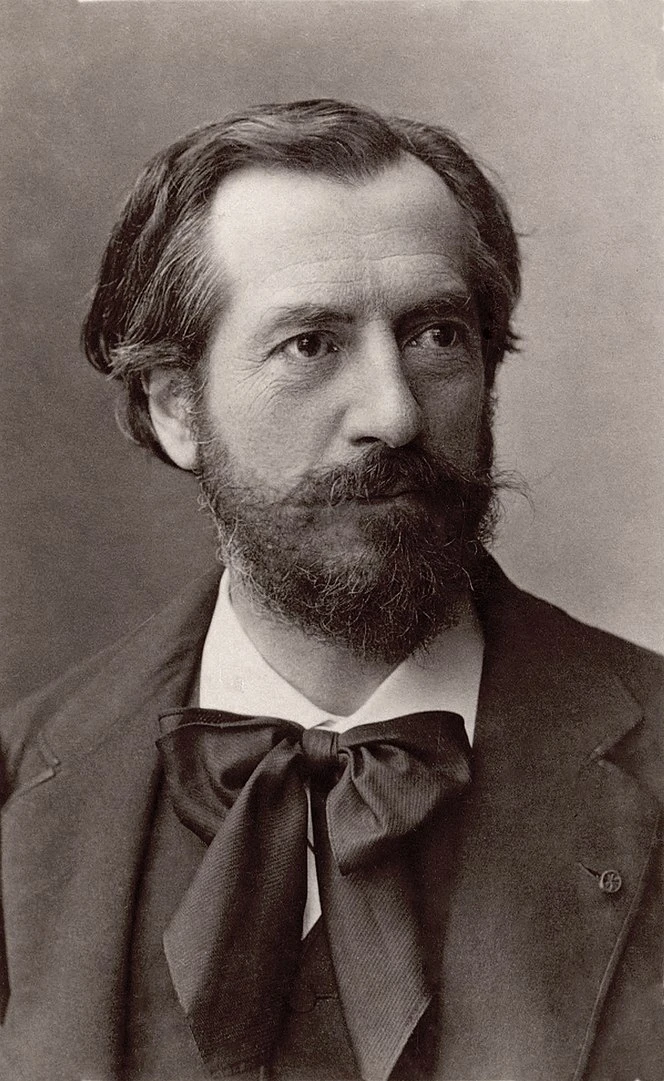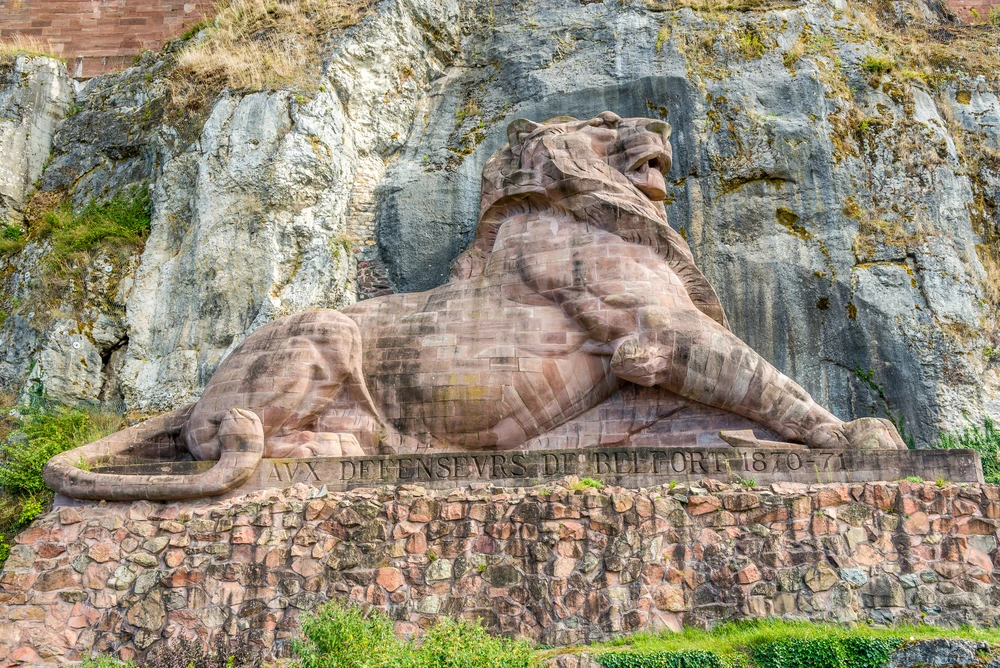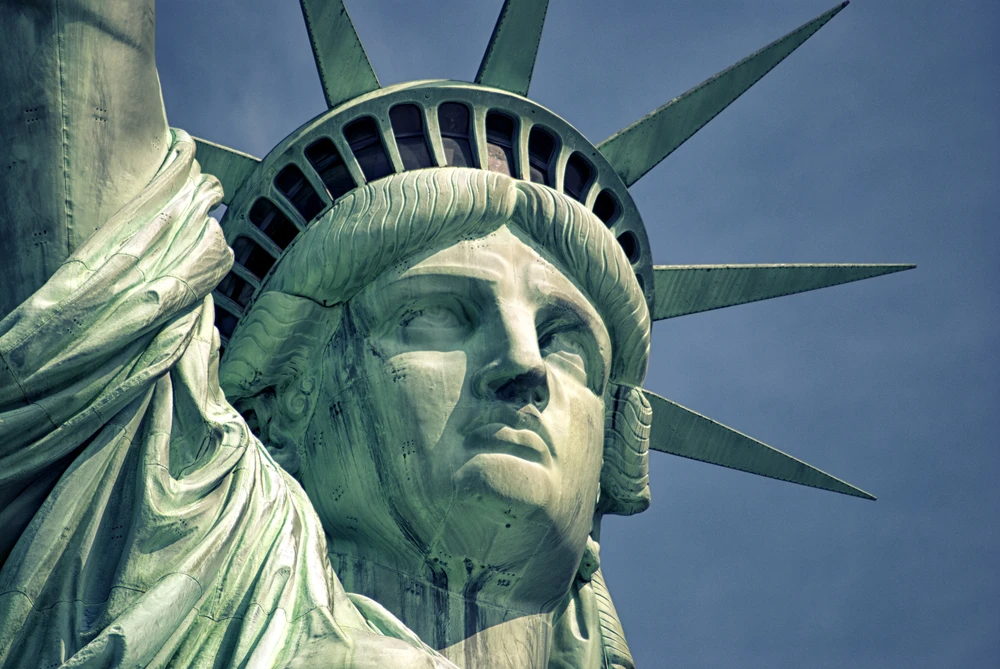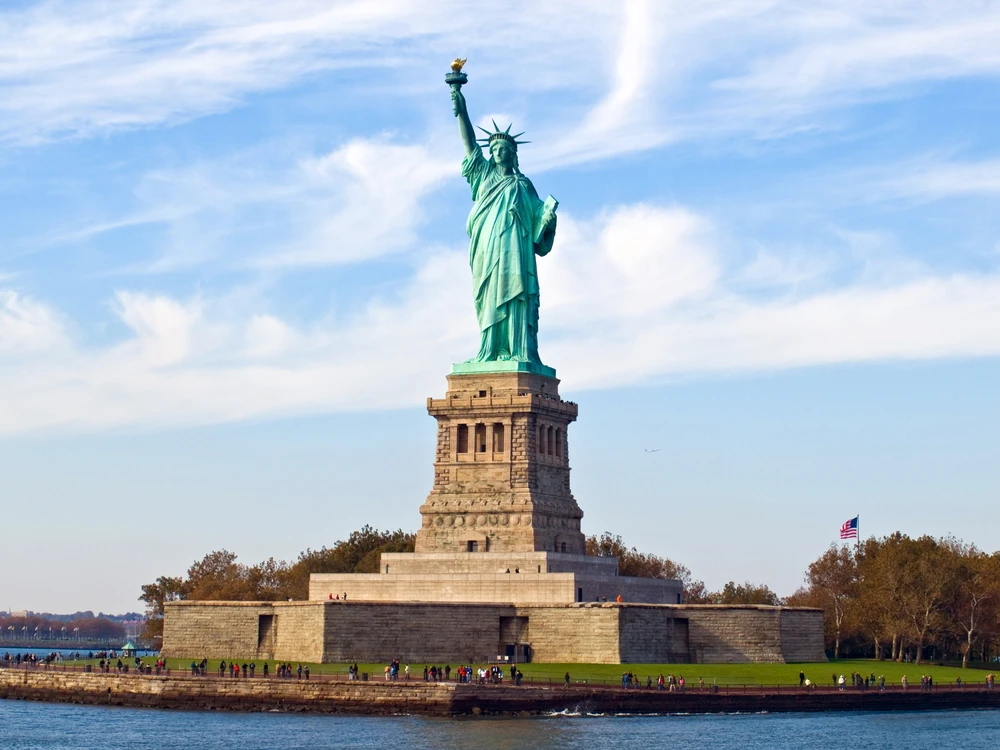An idea born of friendship
It all began in 1865, on the initiative of Édouard de Laboulaye, a lawyer and lover of the United States. His idea was simple: to offer a grand monument to celebrate the centenary of American independence and seal Franco-American friendship. The project is entrusted to Auguste Bartholdi, an Alsatian already dreaming of great colossal statues. Bartholdi imagined a draped, majestic woman holding a torch in one hand, and a tablet engraved with July 4, 1776, the date of the American Declaration of Independence, in the other. At his feet, broken chains symbolize the end of oppression. Every detail is a message.

Auguste Bartholdi (1834–1904) by Nadar
Paris, capital of Liberty
Construction began in Paris in 1875, in the workshops of Gaget, Gauthier & Cie. You can come and visit it: Parisians flock to see this giant statue taking shape piece by piece. In 1884, it's finished: 46 meters of hammered copper, barely 2.5 mm thick, but rock-solid thanks to the metal skeleton designed by Gustave Eiffel. Imagine the effect it produced in those workshops: a face 5 meters high, a hand 5 meters long, an index finger 2.40 m long... It's said that the face of Liberty was inspired by that of Bartholdi's mother.
The Lion of Belfort recast by Bartholdi before the Statue of Liberty / photo by milosk50/Shutterstock.com
A 350-piece voyage
Once completed, the statue is dismantled into 350 pieces carefully packed into 214 crates. The ship Isère crosses the Atlantic and arrives in New York in 1885, welcomed as a hero. Meanwhile, Americans, thanks to a subscription launched by journalist Joseph Pulitzer, finance the 47-meter-high pedestal built on Bedloe's Island (now Liberty Island). Some of the stones come from Lorraine, a nod to Franco-American friendship.
The big day: October 28, 1886
The Statue of Liberty is inaugurated on October 28, 1886. President Grover Cleveland addresses a huge crowd: nearly one million people flock to witness the event. The torch rises 92.99 m above the ground. Liberty finally lights up the world.
The Statue of Liberty / photo by luca amedei/Shutterstock.com
Migrants' first look
From 1892, Ellis Island became the gateway to the United States. Between then and 1954, over 12 million migrants disembark after a long crossing. The first image they saw was that of Liberty, a giant silhouette, the promise of a new life. For many, this statue will remain the strongest memory of their arrival in America.
Today, a universal monument
Listed as a UNESCO World Heritage Site in 1984, restored for its centenary in 1986, the statue still attracts over 4 million visitors every year. You have to climb 354 steps to reach its crown and admire Manhattan. The original, replaced torch is on display in its museum. And in France, you can admire its "little sisters", such as the one that stands on Ile aux Cygnes in Paris, or the one in Colmar, Bartholdi's hometown. The Statue of Liberty isn't just New York: it's universal.
The Statue of Liberty / photo by Matej Hudovernik/Shutterstock.com
FAQ
How tall and heavy is the Statue of Liberty?
It measures 46 m (93 m with base) and weighs around 225 tonnes, including 31 tonnes of copper and 125 tonnes of steel.
Who designed the Statue of Liberty and why?
French sculptor Auguste Bartholdi imagined it to celebrate the centenary of American independence and the friendship between France and the United States.
What role did Gustave Eiffel play?
He designed the internal metal structure that gives the statue its solidity despite its thin copper finish.
How many pieces were sent to the United States?
The statue was dismantled into 350 pieces shipped in 214 crates by the ship Isère.
Why is the Statue of Liberty a symbol?
Because it represents freedom enlightening the world, hope for a better future, and friendship between two peoples.






